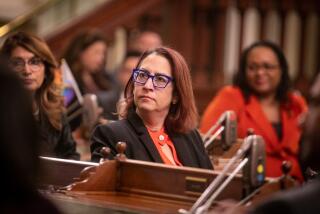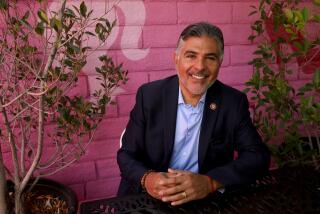Congressional candidate Michelle Caruso-Cabrera hunts for votes in coronavirus ‘epicenter of the epicenter’
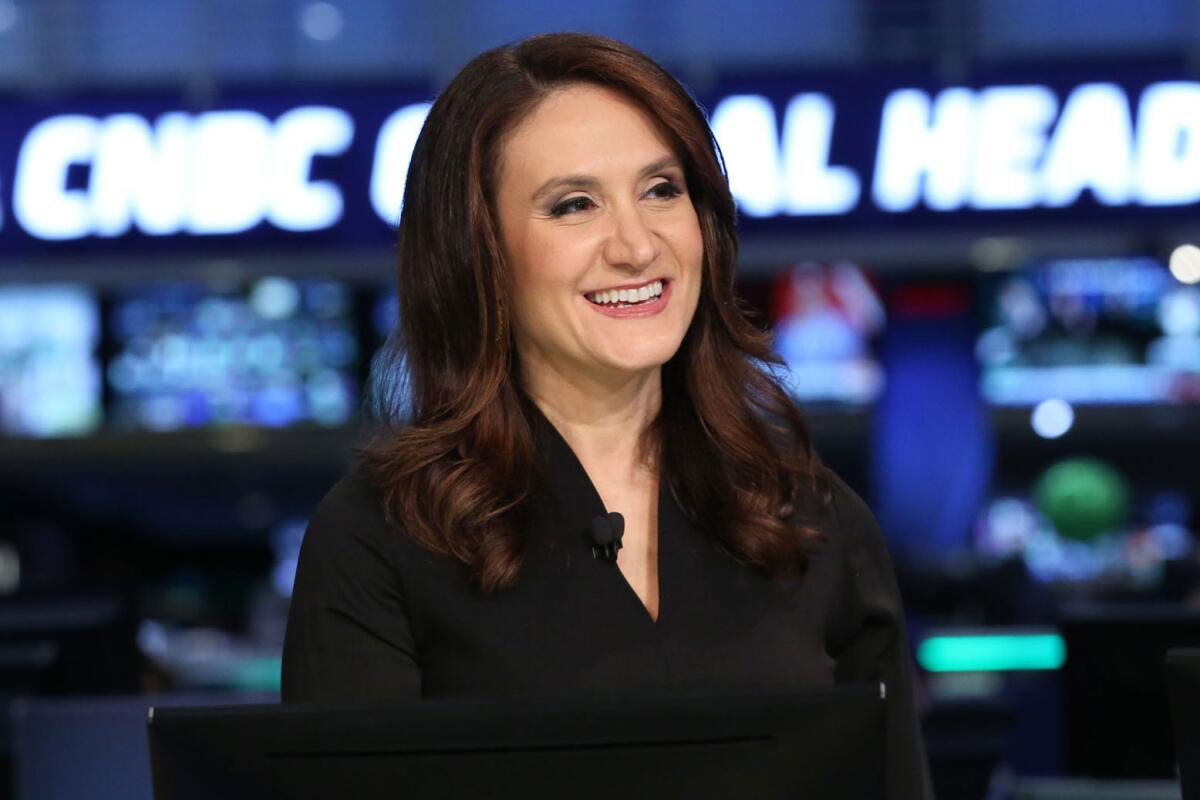
For 20 years, Michelle Caruso-Cabrera was a familiar face to viewers tuning in for business news on cable network CNBC.
For a candidate for Congress, that visibility could normally prove an asset. But the rules of campaigning in the age of coronavirus have kept her from taking full advantage of it. Not to mention she is seeking to topple an incumbent who is probably even more of a familiar face: media-savvy progressive Rep. Alexandria Ocasio-Cortez of New York.
Last week, Caruso-Cabrera was unrecognizable under a black floppy rain hat and a face mask as she loaded aluminum trays of Mexican food into the back of her black Jeep Cherokee parked on a street in Astoria, Queens, while rainwater dripped down from the elevated subway platforms overhead. Instead of pressing the flesh with residents at community centers or outside of supermarkets, her public appearances have been limited to weekly trips to Mt. Sinai Queens, delivering meals she has purchased from local restaurants to the staff at the hospital’s ICU unit.
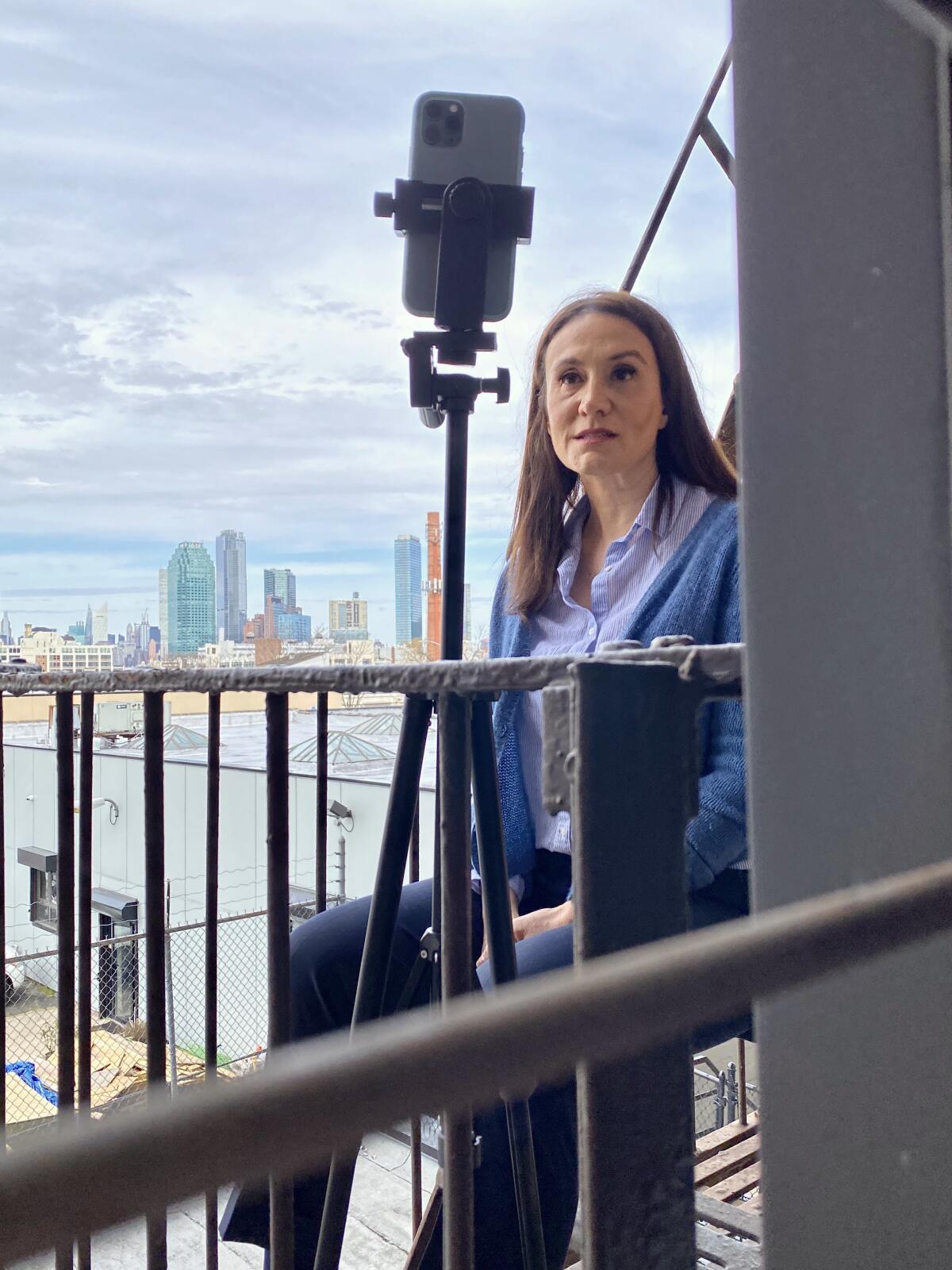
“When I entered this race, I did not expect it to be in the epicenter of the epicenter of an international pandemic,” said Caruso-Cabrera, 53. “But that is absolutely what’s going on here. I mean, this is the hardest-hit district in the entire country.”
Caruso-Cabrera is one of five candidates running for the Democratic nomination for the seat representing the 14th Congressional District, made up of north-central Queens — which includes Elmhurst Hospital, where the crush of COVID-19 patients became a central image of the crisis back in March — and the eastern part of the Bronx.
The race would be a stretch for any politician, never mind a political newcomer who is a former Republican. Ocasio-Cortez, in the two years since her stunning upset win in 2018, has become one of the country’s most recognizable — and in some circles, revered — politicians. As of Wednesday, she had about $3.5 million on hand for her reelection campaign. In contrast, Caruso-Cabrera has raised about $1 million.
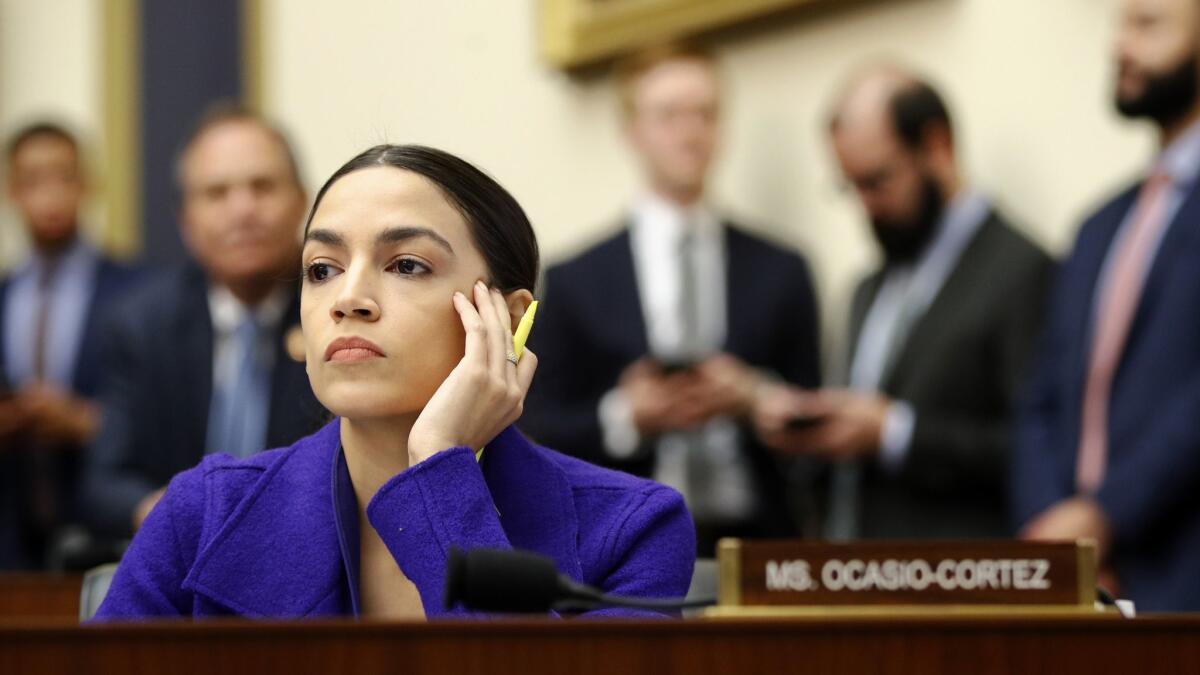
Caruso-Cabrera left her full-time role at CNBC in 2018 and has long considered running for political office. She says it was Ocasio-Cortez’s vocal opposition to Amazon’s attempt to build a second headquarters in the Long Island City section of Queens with the help of $3 billion in city and state tax subsidies that gave her the motivation to enter the primary race.
“She drove away 25,000 jobs from a district that has half the median income of the one right next door in Manhattan,” Caruso-Cabrera said, in what has become a standard talking point in her pitch to voters.
Ocasio-Cortez has maintained that the Amazon deal was a giveaway of taxpayer money to the tech behemoth.
“The congresswoman opposed the original deal because it lacked transparency and handed billions in public dollars to a corporation that already makes massive profits, while mistreating its workers and paying zero in federal taxes,” a representative for Ocasio-Cortez said.
Along with Caruso-Cabrera, Ocasio-Cortez has three other Democratic primary opponents — James Dillon, Badrun Khan and Jose Velazquez — while eight contenders are vying for the Republican nomination. The 14th Congressional District is a considered a safe seat for Democrats in the November general election, as the party’s vote share skews 29 percentage points above the national average, according to Cook Political Report.
Caruso-Cabrera, who over two decades served as an anchor and international correspondent for CNBC and once worked as a producer for Spanish-language broadcaster Univision (her grandparents are Cuban), is the most prominent of the challengers. On paper, MCC, as Caruso-Cabrera calls herself, versus AOC is an ideological battle royal.
Both come from families with working-class backgrounds. MCC is a business advocate backed by the U.S. Chamber of Commerce, while AOC was the highest-profile supporter of democratic socialist Bernie Sanders’ presidential campaign until he dropped out of the race April 8.
But social distancing guidelines and the stay-at-home order New York state set in place March 20 have put the retail politics typically involved in a local race on hold. Greeting commuters at subway stops, fundraisers at the homes of supporters, and candidate forums are all off the table. Meanwhile, Ocasio-Cortez — who has also been delivering meals to constituents — gets national exposure on cable news and talk shows such as “The View.”
Running her campaign out of her Sunnyside apartment, Caruso-Cabrera uses the fire escape — which offers a panoramic view of the Long Island City skyline — as the set for video messages shown on her website and social media pages. She also employs digital platforms to document how residents in the area are dealing with the pandemic.

“I shoot video when I’m trying to go to the supermarket,” said Caruso-Cabrera, who moved to Queens to Manhattan with her husband last year. “And it’s really important that people understand the reason this district is hit so hard is because you have multiple generations living in the same house.
“They don’t have jobs where they can work from home, so they weren’t able to stay home and isolate as soon as many other workers were able to do,” she said. “And then up in the Bronx, a lot of first responders live in areas like Throgs Neck.”
Throgs Neck has 22.7 coronavirus cases per thousand residents, which is 64% higher than the New York City average. In East Elmhurst, the figure is 28.6 per thousand, more than double the average, according to a ProPublica study.
On the ride to Mt. Sinai, a campaign staffer following behind in another vehicle calls Caruso-Cabrera. He advises her to keep her car windows open because a reporter is sitting in the back seat. “That’s what they’re doing in Ubers,” he tells her. “Make sure you don’t get sick.”
When Caruso-Cabrera arrives at the hospital, Dr. Steve Kassapidis, dressed in scrubs, comes out to help receive the delivery along with the ICU’s secretary Maureen Daly. A campaign volunteer, standing 10 feet away, takes photos for the candidate’s website.
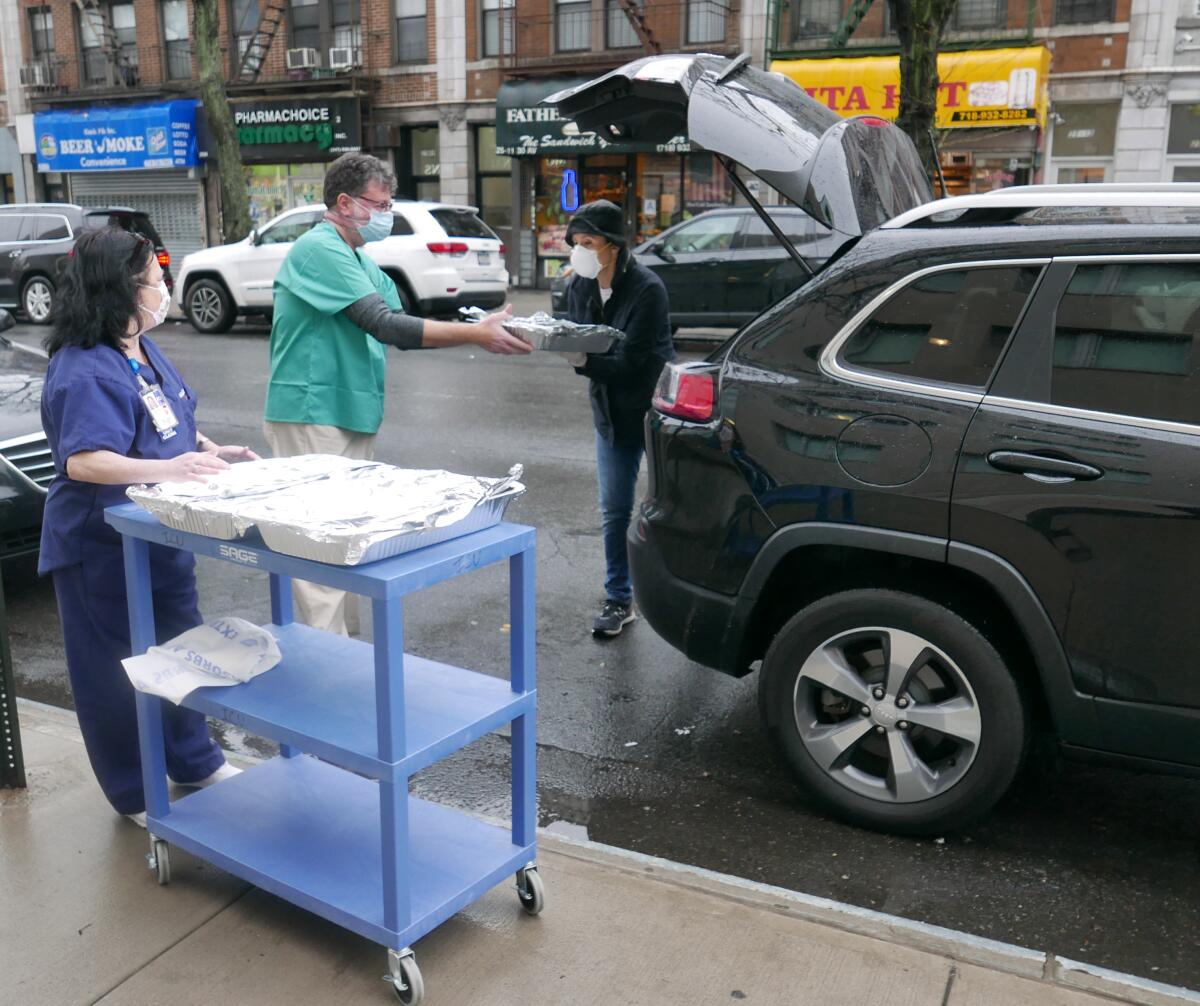
Caruso-Cabrera first connected with Kassapidis after he put out a tweet asking for more ventilators for the hospital.
“He was able to get the ventilators, so I asked him, ‘Can I buy you lunch?’” Caruso-Cabrera said. “That’s how it started.”
The candidate is looking to expand her efforts to other hospitals serving the district such as Elmhurst. The choice of restaurants is limited as many nearby are closed and those open have difficulty obtaining enough ingredients for a large order.
“Elmhurst has actually got a coordinator for donations because they have so many people who want to help,” she said. “The reason Elmhurst Hospital made news is because it didn’t have drive-through testing, so everybody was lined up down the block, and it became a very visual symbol of what was happening. But all of these hospitals, you talk to anyone who is working with them, is overwhelmed.”
Daly, a staffer at Mt. Sinai for 33 years, said one of her cousins was a COVID-19 patient at the hospital who died the previous week.
Caruso-Cabrera said she is adapting her campaign as well as possible amid the unprecedented health emergency.
“Did I expect to be shaking more hands? Absolutely. But, no, I still think I can get my message out. And my primary focus really is that the constituents stay as healthy as possible and as safe as possible, and that’s first and foremost when I’m thinking about how it is that we are going to reach them,” she said.
She has organized web videoconferences with as many as 60 people, and even larger group phone calls, which are preferred by older voters not comfortable with Zoom, Cisco Webex or GoToMeeting. The stay-at-home orders have actually made them easy to reach, she said.
“Instead of going to meetings with voters, I’m speaking with community groups, religious groups, civic associations, business associations over the phone in big group calls,” she said. “Before coronavirus all these meetings would’ve happened in the evening, after many voters got off work if they worked the day shift.”
As the June 23 primary draws closer, Caruso-Cabrera says, she could start running television ads. She acknowledges there is a strong chance she will have to produce them herself with her smartphone and laptop computer. “I know how to produce content, and I can create a lot of content to get my message out,” she said.
Caruso-Cabrera says she is ready and willing to engage in a virtual debate with Ocascio-Cortez if social distancing remains in effect beyond the current May 15 end date recently set by New York Gov. Andrew Cuomo. Ocasio-Cortez’s campaign said the incumbent will debate Caruso-Cabrera.
More to Read
Get the L.A. Times Politics newsletter
Deeply reported insights into legislation, politics and policy from Sacramento, Washington and beyond. In your inbox three times per week.
You may occasionally receive promotional content from the Los Angeles Times.

